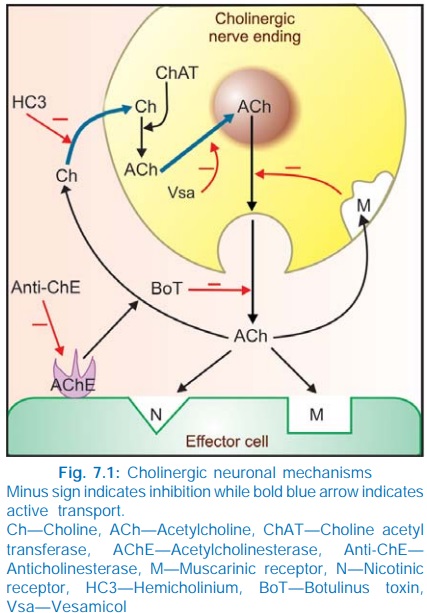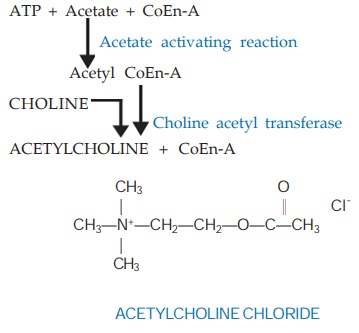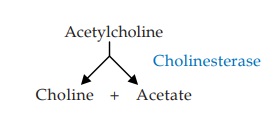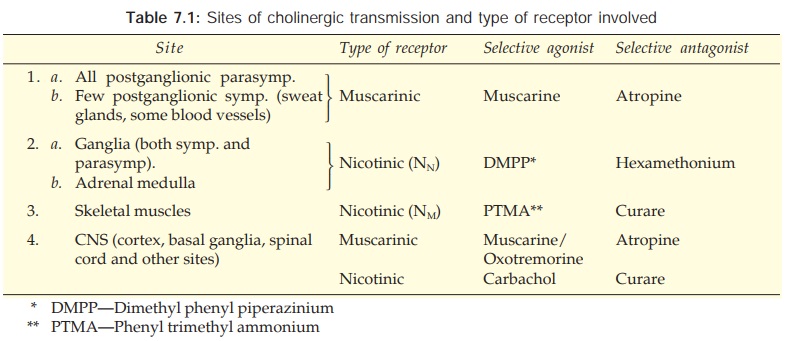Cholinergic Transmission
| Home | | Pharmacology |Chapter: Essential pharmacology : Cholinergic System And Drugs
Acetylcholine (ACh) is a major neurohumoral transmitter at autonomic, somatic as well as central sites.
CHOLINERGIC
TRANSMISSION
Acetylcholine
(ACh) is a major neurohumoral transmitter at autonomic, somatic as well as central
sites. These sites are listed in Table 7.1
Synthesis, Storage And Destruction Of Ach

The
cholinergic neuronal mechanisms are summarized in Fig. 7.1.
Acetylcholine is synthesized locally in the cholinergic nerve endings by the following pathway

Choline is actively
taken up by the axonal membrane by a Na+: choline cotransporter and acetylated
with the help of ATP and coenzyme-A by the enzyme choline acetyl transferase present in the axoplasm. Hemicholinium blocks choline uptake (the
rate limiting step in ACh synthesis) and depletes ACh. Most of the ACh is
stored in ionic solution within small synaptic vesicles, but some free ACh is
also present in the cytoplasm of cholinergic terminals. Active transport of ACh
into synaptic vesicles is effected by another carrier which is blocked by vesamicol.
Release of ACh from
nerve terminals occurs in small quanta—amount contained in individual vesicles
is extruded by exocytosis. In response to a nerve AP synchronous release of
multiple quanta triggers postjunctional events.
Two toxins interfere
with cholinergic transmission by affecting release: botulinus toxin inhibits release, while black widow spider toxin induces massive release and depletion.
Immediately after release, ACh is hydrolyzed by the enzyme cholinesterase and
choline is recycled.
A
specific (Acetylcholinesterase—AChE
or true cholinesterase) and a nonspecific (Butyrylcholinesterase—BuChE
or pseudocholinesterase) type of
enzyme occurs in the body; important differences between these two types are
given in Table 7.2. While AChE is strategically located at all cholinergic
sites and serves to inactivate ACh instantaneously, BuChE present in plasma and
elsewhere probably serves to metabolize ingested esters.


Related Topics
